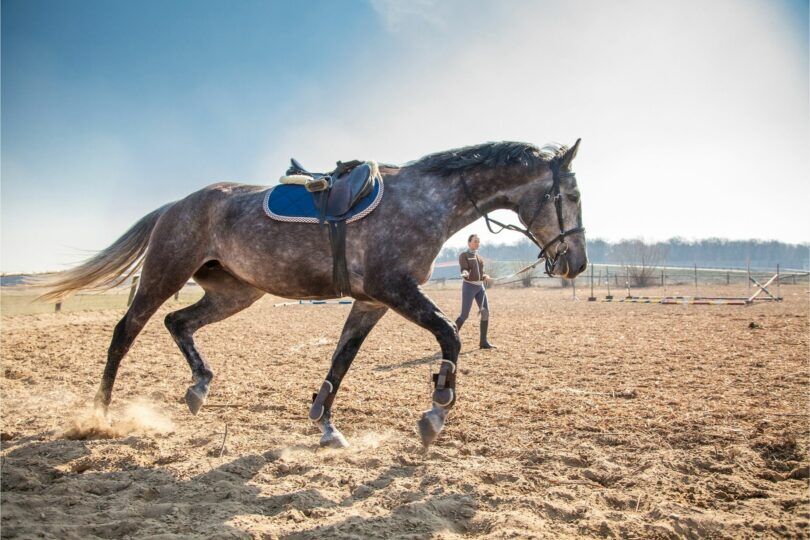Going green? Go in with eyes wide open.
Despite the name, “green” horses have nothing to do with the Wizard of Oz. If you’re in the market for a horse and see one described as “green,” you’re perhaps wondered what they’re talking about.
Green horses are those with little to no training. They could range from being halter broke to having had a few rides. Due to their inexperience, they are best suited to a patient, experienced rider.
The Green Horse Defined
Green doesn’t refer to one specific stage of training, but rather to the fact that a horse has limited training. This could mean anything from they’re only halter broke to being broke to ride but not “finished.”
Where did the term “Breaking” come from?
The term “breaking” comes from the time when cowboys would sit on a bucking horse until it quieted. They would essentially try to “break” the horse’s spirit until it submitted to a rider.
Thankfully, training has come a long way since then!
Who should ride a green horse?
Green horses are best handled, ridden, and trained by experienced and patient riders—not a beginner.
Levels of Training
Like with any discipline, there are levels of training within the horse world. Take a look at these basic levels:
Halter Broke
One of the first things most horses learn is how to wear a halter and walk nicely on a lead. Usually, this is done with foals and is the first step in working with wild horses like mustangs.
If you see this description of a horse, you should be able to catch the horse, halter him, and lead him.
Photo Cred: Canva
Green Broke
This generally refers to a horse who is barely started under saddle. They may have just learned to accept a rider and likely have a few rides beneath their belt (or cinch or girth).
Some horse show prospects may be fairly consistent under saddle yet still be described as “green” due to a lack of show experience.
Well Broke / Finished
A well-broke horse is about as complete as they come. Consider this category the same as beginner-safe or bombproof. They will generally be reliable, understand all cues, and have good transitions.
Photo Cred: Canva
Pros and Cons
If you’re an experienced rider and are debating whether to try your hand with a green horse, check out some of the pros and cons.
Benefits of a Green Horse:
- Less expensive
- Minimal bad habits
- Young, so likely has a longer career ahead
- Trusting
Drawbacks of a Green Horse:
- Lots of repetition needed
- Takes months to learn the basics
- Only suitable for advanced riders
- If started poorly, can lead to a lifetime of bad habits
Frequently Asked Questions
Q: How much is a broke horse worth?
While broke horses will almost always cost more than a green or unbroken horse, how much depends on other factors like their age, breed, and level of training.
A 6-year-old Warmblood schooling first level could easily be worth $25,000, while a well-broke grade horse may only cost $5,000.
Q: If there are green horses, are there green riders?
Absolutely! Anyone new to riding through a beginner can be considered a green rider (and typically shouldn’t ride or handle a green horse).
Q: Where did the term “Green” come from?
Horses with little to no training could be considered “unripe,” just like how many fruits aren’t yet ready to eat when they are green.
Parting Thoughts
A green horse could be a great fit for an experienced rider looking to take on a new challenge or a trainer who wants to build a relationship with their next riding partner from the ground up. If you’re green yourself, stay away from green horses as they can be a lot to handle (ever heard the saying “the blind leading the blind”?). If you’re unsure if a green horse is right for you, talk to your trainer.
P.S. Enjoy this article? Trot on over to:
- 32 Things you can do today to calm your riding nerves forever
- Understanding (and dealing with) the spooky horse
- Scared to ride your horse? Get your mojo back
- How can I calm my nerves before horse riding?
- What are some ways to gain confidence riding horses
- Safe or sorry: how often to replace horseback riding helmets
